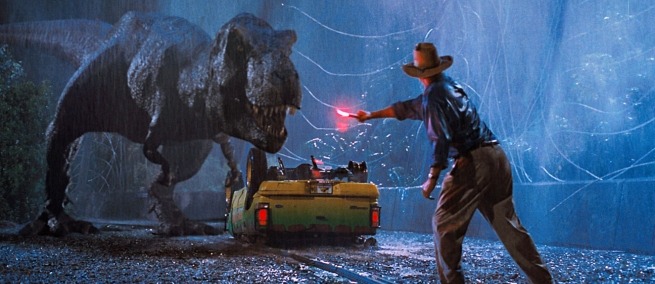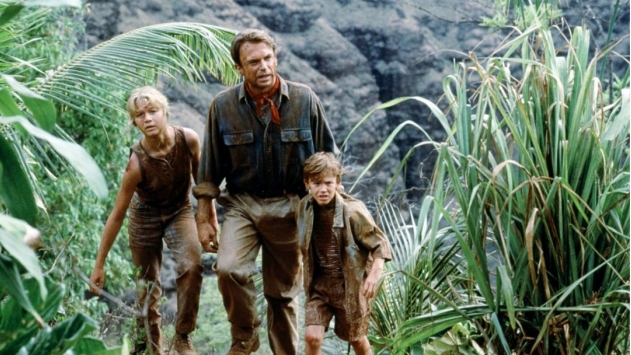
In JURASSIC PARK, paleontologist Dr. Alan Grant witnesses the amazing but terrifying birth of a Velociraptor. In real life, McArthur-winning paleontologist Jack Horner is engineering a dinosaur. His dino-engineering project uses gene-editing technologies to modify chicken DNA, which he hopes will birth a dinosaur in his lifetime. So far, his team at Montana State University has engineered everything but the tail. Horner was Steven Spielberg’s inspiration for the character of Dr. Grant. The Museum of the Moving Image will show Spielberg’s JURASSIC PARK in 35mm on June 3 and 4.
Jack Horner consulted with model-makers and special effects technicians on the dinosaurs for the entire JURASSIC PARK franchise. Working with Spielberg, “we talked a lot about what the dinosaurs could do and what they couldn’t do,” he told Science & Film during a phone call in May. “A lot of it had to do with how [dinosaurs] walked. There is a scene in which a big foot comes down, and it had to land properly.” On set, “I would watch the shoot and then watch the dailies, and talk with the actors to make sure they were pronouncing words correctly. I went through the script a lot to make sure everything was as accurate as we could get it.”

Special effects master Stan Winston (ALIENS) made the film’s live action dinosaurs. Horner worked with Winston on making the life-size animatronics. “The T-Rex was T-Rex size. Basically any time you see a whole dinosaur it’s a computer graphic and when you see part of a dinosaur it’s an animatronic,” Horner said. “As we were beginning to shoot JURASSIC PARK, ILM [George Lucas’s visual effects company] couldn’t make the computer graphics. They were going to make [the dinosaurs] in claymation first, and then halfway through the shooting process ILM said they could do it, so they changed from claymation to computer graphics.”
By consulting with Horner, Spielberg committed to basing the film in real science. “He definitely didn’t want to get nasty letters from little kids saying that something had been wrong. But on the other hand, it is a fictional film so the dinosaurs do things they wouldn’t normally do. Basically, my job was to make sure they looked as accurate as possible. And then he made actors out of them. They do some things that dinosaurs couldn’t do. They run faster in many cases than they could have actually run.”

The screening of JURASSIC PARK is part of the Museum’s “See it Big!” series organized by Michael Koresky and Jeff Reichert of Reverse Shot, Chief Curator David Schwartz, and Associate Film Curator Eric Hynes. The summer of 2017 is devoted to films by Steven Spielberg, all of which will be projected in 35mm. For more on the JURASSIC PARK franchise, read Science & Film’s interview about JURASSIC WORLD with Dr. Horner.